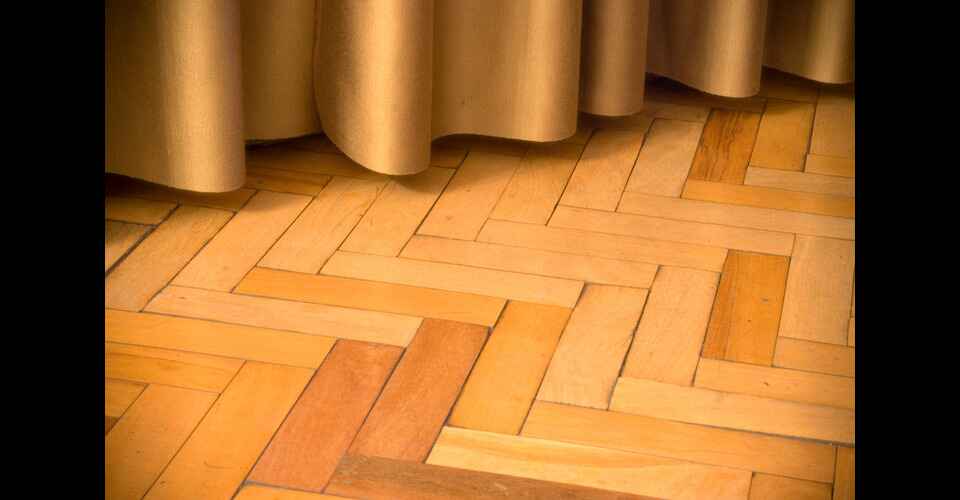How to refinish bamboo floors – a complete guide
Bamboo floors are a relatively new flooring material. They’re just as beautiful as hardwood but less taxing on the pocket. With the proper attention and maintenance, they can last a long time.
But if your bamboo flooring is past its prime and you’re wondering whether or not you can refinish bamboo floors by yourself, this blog is for you. This complete bamboo flooring refinish guide has all the answers to your questions.
We’ve got a lot to cover, so let’s dive right in.
What is Bamboo Flooring?
Bamboo is not wood but rather a type of grass. For this reason, bamboo flooring is often referred to as fake wood flooring.
In order to make flooring, the bamboo is cut into strips, dried, and compressed into planks. Since it resembles hardwood, bamboo flooring is quickly becoming a great alternative to hardwood flooring.
Three popular types of bamboo flooring options are
- Horizontal bamboo flooring planks – stalks are glued horizontally
- Vertical bamboo flooring planks – stalks are glued vertically
- Strand-woven bamboo flooring planks – stalks are shredded into fibers and bonded together with adhesives, then pressed and treated
Some Words of Advice
Bamboo flooring is relatively new. In fact, it’s only been in the market for nearly two decades. So there isn’t too much information about approaching refinishing bamboo floors on your own.
Not surprisingly, I often get asked a question. “Can I refinish bamboo floors by myself?”
I’ll be honest, if you plan to attempt a DIY ‘refinish bamboo floor’ project, remember, you’re taking a chance. Sanding the flooring without the right tools or technique can raise fine splinters. Unfortunately, they may remain even after you refinish your bamboo floor.
What’s worse, toxic volatile organic compounds (VOCs) may be released from the chemicals used in the adhesives that help bind the bamboo fibers together during the manufacturing process.
Having said that, the process is pretty straightforward. It’s quite similar to the process used to refinish hardwood floors. With the right techniques, your refinished bamboo floors can drastically improve the value of your home.
Okay, with this out of the way, let’s get down to business and learn how to refinish bamboo floors the right way.
The Step-by-Step Guide on how to Refinish Bamboo Floors
Step #1: Evaluate the Wear and Tear
You may notice nicks and scratches, or the surface looks dull, but that does not mean you need to refinish your entire floor quite yet. Often, you can simply restore the area of the bamboo floor that sustained considerably more wear and tear with a little touch-up work, known as screening. Not only is this cost-effective, but it circumvents the risk of developing splinters on the floor or releasing VOCs.
The screening process uses an orbital buffer that has a nylon pad attached to it. It helps to roughen up the current finish of your floor and removes small scratches. Once you clean the surface, apply a coat or two of finish, and you’re all set.
Step 2: Check the Thickness
If your bamboo flooring has deep scratches, it needs more than just a little TLC. That means you will need to sand the entire surface.
Before you start sanding the surface, make sure to check whether the layer of bamboo is thick enough. Even though this is usually not an issue for bamboo flooring that is being refinished for the first time, it’s better to check so that the plank remains intact during the process.
A good place to check the thickness is by the door. Remove the threshold to get an accurate cross-sectional view of the floor. The bamboo flooring tile should be 2 millimeters thick. If it’s less than this, you should not proceed to refinish the floor. Instead, you may need to consider replacing the entire bamboo floor.
Step 3: Prepare the Room
I’ll be honest, refinishing bamboo flooring is a messy project. Sanding the floor will send a lot of dust and debris into the air, not to mention the VOCs. You will need to take precautionary measures before beginning the project, such as:
- Remove the furniture from the room.
- Shut off the central air conditioner for a couple of days. In fact, keep it off for two days after the project has been completed.
- Cover the air vents with thick plastic sheets.
- When possible, close the door to isolate the room and prevent dust or fumes from spreading to the entire house.
- Ventilate the room by opening the windows.
- Wear a respirator.
- Remove the baseboards to prevent them from getting damaged.
Step 4: Sand the Surface
Start sanding the floor with a flooring drum sander using 60-grit sandpaper. Remember to keep the drum tilted slightly angle to the bamboo grain. This helps level out any flooring material that has risen up and reduces the chance of splinters forming. You may need to use a flooring edger to reach the corners.
Make sure to keep moving the machine otherwise, the area could get more sanded than necessary. Also, replace the sandpaper regularly because it will get worn down.
Vacuum the floor and repeat the process using 80-grit sandpaper and once again with 100-grit sandpaper. Remember to vacuum the surface after each sanding.
Step 5: Check for Splinters and Gouges
After vacuuming, make sure to wipe the floor down with a tack cloth. As you do this, continue to check the floor for splinters. If you discover any splintering, simply sand it with a pad sander.
However, if you find gouges, fill them with wood filler. Smoothen the filler with a putty knife and let it dry.
Step 6: Apply the Stain
After sanding, the bamboo floor will have light and dark patches of color. You can apply a coat of stain with a rag or paintbrush. Avoid using a sponge since it will absorb the stain and not transfer it to the flooring. Give the coat nearly two hours to dry, and apply another coat for the best results.
Step #7: Apply a Sealer
Finally, it’s time to apply a coat of sealer. Choosing one with a polyurethane finish is a good choice because it’ll create a tough, scuff-resistant layer on your bamboo floor. So sealing your floors with the right sealer will help them last longer.
Like the staining process described above, you need to apply two coats of sealer. Let the first layer dry before applying the second one.
Congratulations, you’ve successfully learned how to refinish bamboo floors.
Over to You
Bamboo floors can add beauty and value to your home. The key is to maintain it regularly. And that can be a challenge since some bamboo floorings can get scratched and damaged from high heels, pets, or furniture.
But the good news is we can help make your bamboo floor look as good as new. At NDA Construction, we have the experience and skilled workforce to repair and refinish bamboo floors in no time at all. Plus, as a professional and reputable home improvement company, we can help transform various aspects of your home.


